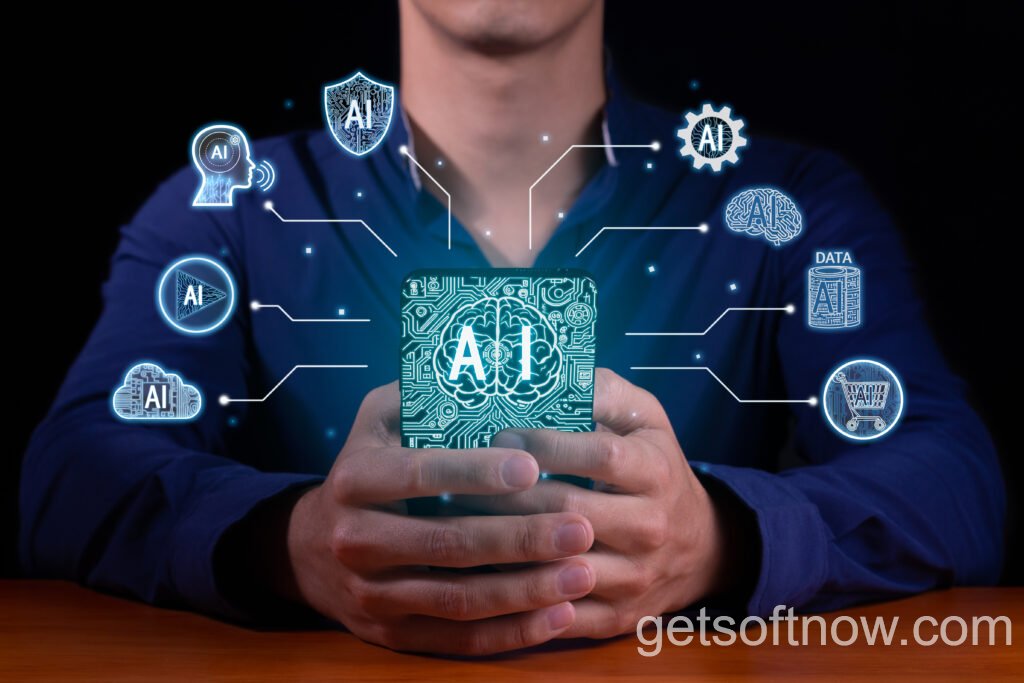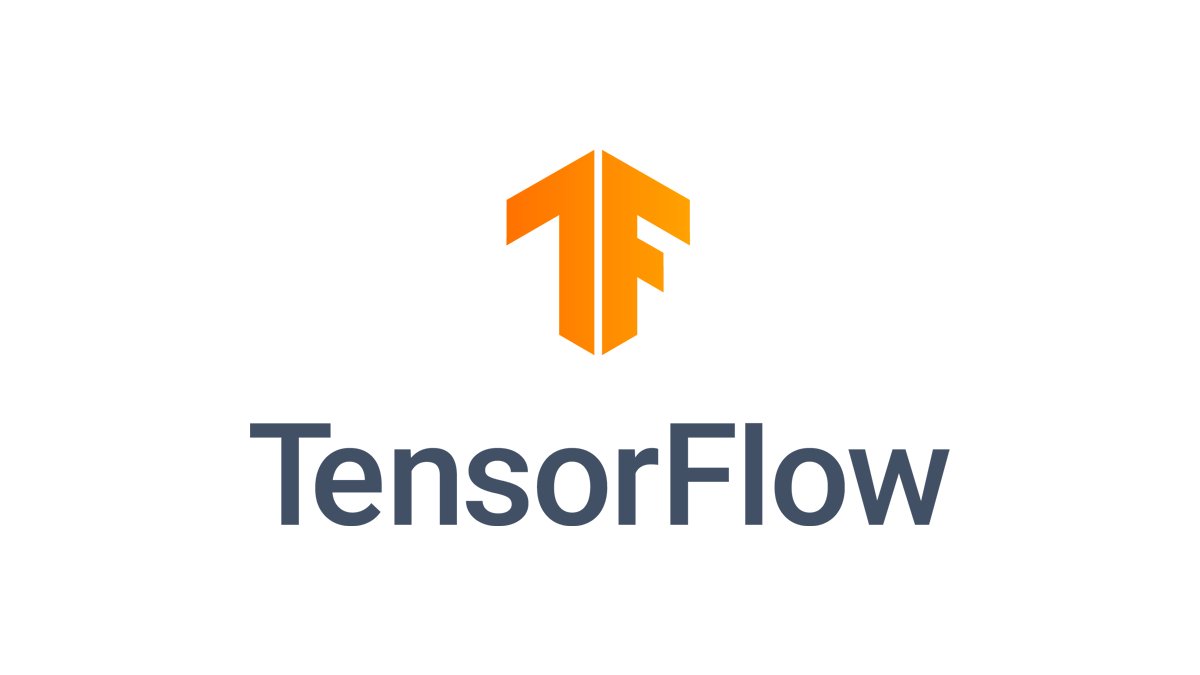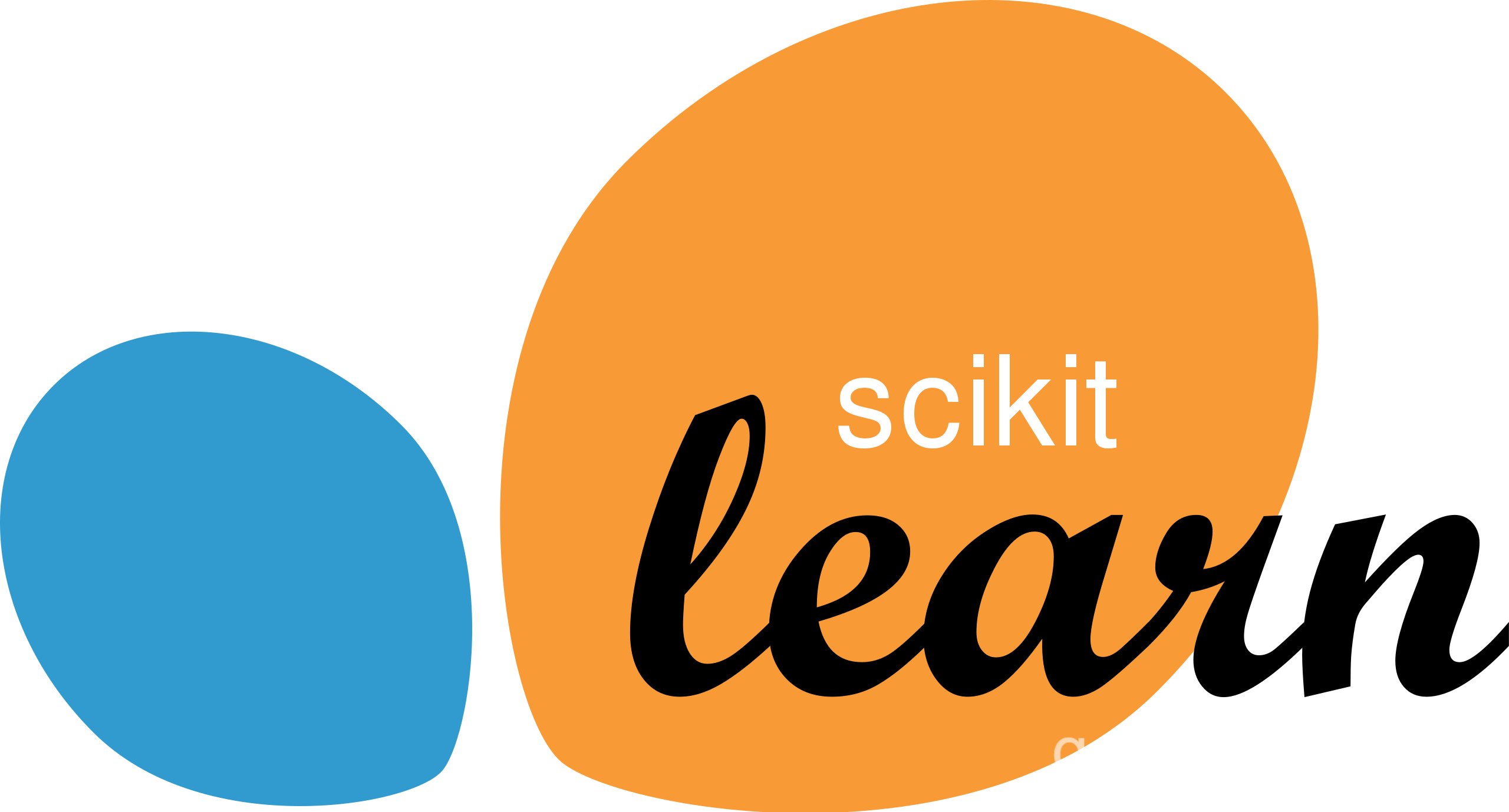Discover the power of open source AI software. This comprehensive guide delves into the benefits, challenges, and top projects in the field, empowering you to harness the potential of these cutting-edge tools.
Open Source AI Software: Unleashing the Power of Collaboration
In the rapidly evolving landscape of artificial intelligence (AI), a revolution is brewing, fueled by the collaborative spirit of open source software. Open source AI software represents a paradigm shift, where the once-exclusive domain of proprietary algorithms and closely guarded code is being democratized, fostering innovation and empowering a global community of developers, researchers, and enthusiasts.
At its core, open source AI software refers to AI-related projects whose source code is freely available for anyone to study, modify, and distribute. This transparency and accessibility have catalyzed a collaborative ecosystem, where individuals and organizations can contribute their expertise, share ideas, and collectively push the boundaries of what’s possible.
Benefits of Open Source AI Software
The adoption of open source AI software has ushered in a multitude of benefits, revolutionizing the way we approach AI development and deployment. From fostering trust and ethical practices to enabling cost-effective solutions and fostering innovation, the advantages of this approach are profound.
Transparency and Trust
One of the most significant advantages of open source AI software is its inherent transparency. By making the source code openly available, it undergoes rigorous scrutiny from a global community of experts. This peer review process not only enhances the quality and reliability of the software but also instills trust in its users.
“Open source is the only way to make software that you can trust, because the source code is available for audit by anyone.” – Linus Torvalds, Creator of Linux
Transparency also fosters ethical and responsible development practices, as the code is subject to continuous evaluation and refinement, ensuring that AI systems adhere to principles of fairness, accountability, and transparency.
Community-Driven Development
The true power of open source AI software lies in its vibrant, global community of contributors. This diverse network of developers, researchers, and enthusiasts brings a wealth of perspectives, expertise, and problem-solving abilities to the table. By collaborating and sharing knowledge, the community can rapidly identify and address issues, implement improvements, and drive innovation at an unprecedented pace.

This collaborative approach not only accelerates the development process but also ensures that the software remains relevant and adaptable to the ever-changing needs of the AI landscape.
Cost-Effectiveness
Traditional proprietary AI software can often be prohibitively expensive, creating barriers to entry for individuals, small businesses, and organizations with limited resources. Open source AI software, on the other hand, offers a cost-effective alternative, providing free or low-cost solutions that democratize access to cutting-edge AI technologies.
By eliminating licensing fees and upfront costs, open source AI software empowers developers and researchers to focus their resources on innovation, experimentation, and tailoring the software to their specific needs. This cost-effectiveness has contributed to the widespread adoption of open source AI tools, enabling a diverse range of stakeholders to leverage the power of AI.
Customization and Flexibility
One of the key advantages of open source AI software is its inherent flexibility and customizability. With access to the source code, users can modify and adapt the software to meet their unique requirements, whether it’s integrating with existing systems, optimizing for specific hardware configurations, or extending functionality through custom modules.
This level of customization is particularly valuable in industries or domains with specialized needs, such as healthcare, finance, or scientific research, where tailored AI solutions are essential for optimal performance and compliance with industry-specific regulations.
- Integrate with legacy systems
- Optimize for specific hardware
- Extend functionality with custom modules
Fostering Innovation and Collaboration
Open source AI software fosters an environment of shared knowledge and resources, enabling cross-pollination of ideas and accelerating technological progress. By providing a common foundation, researchers, developers, and organizations can build upon existing work, leveraging the collective efforts of the community to push the boundaries of what’s possible.
This collaborative approach encourages the free flow of information, facilitates knowledge transfer, and promotes the rapid dissemination of new techniques and methodologies. As a result, open source AI software has become a breeding ground for innovation, driving advancements in areas such as machine learning, natural language processing, computer vision, and beyond.
Furthermore, the open source model encourages diversity and inclusivity, allowing individuals from various backgrounds and disciplines to contribute their unique perspectives and expertise. This diversity of thought and experience is crucial for tackling complex AI challenges and ensuring that AI systems are developed in an ethical and responsible manner.
Challenges and Considerations
While the benefits of open source AI software are undeniable, it’s important to acknowledge and address the challenges and considerations that come with this approach. From ensuring proper governance and quality control to addressing security and privacy concerns, and navigating licensing and legal implications, these factors must be carefully evaluated and managed.
Lack of Dedicated Support
One of the potential drawbacks of open source AI software is the lack of dedicated support channels. Unlike proprietary software, where users can rely on vendor-provided support and maintenance, open source projects often rely heavily on community efforts and self-support mechanisms.
While active online communities and forums can provide valuable resources and guidance, users may encounter challenges in finding timely and reliable support, particularly for niche use cases or complex issues. This can be especially problematic for organizations or individuals with limited technical expertise or resources.
To mitigate this challenge, it’s essential to thoroughly evaluate the project’s community activity, documentation quality, and available learning resources before adopting an open source AI solution. Additionally, organizations may consider engaging with the community, contributing to documentation efforts, or exploring third-party support options.
Governance and Quality Control
In the decentralized world of open source AI software, maintaining project standards, ensuring code quality, and effective contributor management can be challenging. Without a centralized authority or formal governance structure, projects may face difficulties in enforcing coding guidelines, conducting thorough code reviews, and managing the influx of contributions from diverse sources.
Poorly managed projects can lead to code fragmentation, compatibility issues, and potential security vulnerabilities, undermining the long-term sustainability and reliability of the software. To address this challenge, many open source AI projects have adopted formal governance models, established code review processes, and implemented contributor guidelines to maintain project integrity and quality.
It’s crucial for users to evaluate the governance practices and quality control measures of an open source AI project before adopting it, to ensure its ongoing stability and reliability.
Security and Privacy Concerns
While open source AI software promotes transparency and community-driven development, it also introduces potential security and privacy risks. With the source code openly available, malicious actors may attempt to exploit vulnerabilities or introduce backdoors, compromising the integrity and security of the software.
Additionally, AI systems often handle and process sensitive data, raising concerns about data privacy and ethical implications. Ensuring proper data handling practices, implementing robust security measures, and adhering to relevant regulations and privacy laws become paramount when working with open source AI solutions.
To mitigate these risks, it’s essential for organizations and individuals to stay vigilant, regularly monitor for security updates and patches, and implement comprehensive risk assessment and mitigation strategies. Engaging with the open source community, reporting vulnerabilities, and contributing to security audits and enhancements can also help strengthen the overall security posture of open source AI software.
Licensing and Legal Implications
Open source AI software projects are typically distributed under various open source licenses, each with its own set of terms, conditions, and obligations. Navigating the complexities of these licenses and ensuring compliance can be a daunting task, particularly for organizations operating in regulated industries or those with intellectual property considerations.
Failure to understand and adhere to the terms of an open source license can potentially lead to legal disputes, intellectual property infringement claims, or compatibility issues when integrating with proprietary software or systems. It’s crucial for users to carefully review and understand the licenses associated with the open source AI software they intend to use and seek legal guidance when necessary.
Additionally, organizations must be mindful of the legal and regulatory frameworks surrounding AI development and deployment in their respective jurisdictions. Ensuring compliance with relevant laws, regulations, and industry standards is paramount when leveraging open source AI solutions, particularly in domains such as healthcare, finance, or public safety.
To navigate these challenges, it’s advisable to establish internal processes for license management, compliance tracking, and legal review, as well as actively engage with the open source community to stay informed about licensing updates and best practices.
Top Open Source AI Software Projects
The open source AI ecosystem is teeming with a vast array of powerful and innovative projects, each catering to different needs and use cases. From foundational frameworks to specialized libraries and tools, these projects have become invaluable resources for developers, researchers, and organizations looking to harness the power of AI. Here, we explore some of the most prominent and widely adopted open source AI software projects.
| Image | File Name |
|---|---|
 |
tensorflow.jpg |
 |
pytorch.jpg |
 |
scikit-learn.jpg |
 |
keras.jpg |
 |
opencv.jpg |
TensorFlow
TensorFlow is one of the most popular and widely adopted open source AI frameworks, developed and maintained by Google. It provides a comprehensive ecosystem for building and deploying machine learning models, with support for a wide range of applications, including image recognition, natural language processing, and predictive analytics.
Key features of TensorFlow include:
- Flexible architecture for deploying models on various platforms (desktop, mobile, cloud)
- High-performance numerical computation for training and inference
- Robust model management and serving capabilities
- Extensive documentation, tutorials, and a vibrant community
TensorFlow has found widespread use in academia, research, and industry, powering applications across domains such as computer vision, natural language processing, healthcare, finance, and more.
PyTorch
PyTorch is an open source machine learning library developed by Facebook’s AI Research lab. It offers a flexible and intuitive interface for building and training deep neural networks, with a strong focus on research and rapid prototyping.
Key features of PyTorch include:
- Dynamic computation graph construction for efficient debugging and model modification
- Seamless integration with Python’s rich ecosystem of libraries and tools
- Support for distributed and parallel computing for efficient training on large datasets
- Growing community and extensive documentation
PyTorch has gained significant traction in the research community and is widely used for developing cutting-edge AI models and algorithms, particularly in areas such as computer vision, natural language processing, and generative modeling.
Scikit-learn
Scikit-learn is a machine learning library for Python, renowned for its simplicity, ease of use, and extensive documentation. It provides a wide range of algorithms and tools for various machine learning tasks, including classification, regression, clustering, dimensionality reduction, and more.
Key features of Scikit-learn include:
- Consistent and intuitive interface across different algorithms
- Robust and efficient implementations of classic machine learning algorithms
- Comprehensive documentation and educational resources
- Active community support and continuous development
Scikit-learn is widely adopted in academic research, data science projects, and production environments, offering a reliable and well-tested foundation for building machine learning applications.
Keras
Keras is a high-level neural networks API, designed to enable rapid experimentation and development of deep learning models. It serves as an abstraction layer on top of lower-level frameworks like TensorFlow and provides a user-friendly and intuitive interface for building and training neural networks.
Key features of Keras include:
- Simple and modular architecture for building neural networks
- Support for both convolutional networks and recurrent networks
- Seamless integration with TensorFlow, CNTK, and other backends
- Extensive documentation and active community support
Keras has gained popularity among researchers, developers, and data scientists due to its ease of use and flexibility, enabling them to prototype and deploy deep learning models quickly and efficiently.
OpenCV
OpenCV (Open Source Computer Vision Library) is a comprehensive open source library for computer vision and machine learning tasks. It provides a wide range of algorithms and tools for image and video processing, object detection, facial recognition, and various other computer vision applications.
Key features of OpenCV include:
- Extensive collection of algorithms for image and video processing
- Support for real-time computer vision applications
- Cross-platform compatibility (Windows, Linux, macOS, Android, iOS)
- Extensive documentation and active community support
OpenCV has found widespread adoption in domains such as robotics, augmented reality, security systems, and industrial automation, enabling the development of innovative computer vision solutions across various industries.
These are just a few examples of the many open source AI software projects available. Each project offers unique capabilities and caters to different needs, making it crucial to evaluate and choose the right tools based on your specific requirements, use cases, and project goals.
Getting Started with Open Source AI Software
Embarking on the journey of open source AI software can be both exciting and daunting. To ensure a smooth transition and maximize the benefits of these powerful tools, it’s essential to follow a structured approach, starting with selecting the right project and setting up a robust development environment.
Choosing the Right Project
With the vast array of open source AI projects available, selecting the most suitable one for your needs is crucial. This decision should be guided by several
Choosing the Right Project
With the vast array of open source AI projects available, selecting the most suitable one for your needs is crucial. This decision should be guided by several factors, including project maturity, alignment with your specific use cases, and the learning curve involved.
First, evaluate the project’s maturity and activity level. Well-established projects with a large and active community tend to be more stable, better documented, and offer more robust support. On the other hand, newer projects may provide cutting-edge features but may lack the same level of stability and community support.
Next, consider how well the project aligns with your specific needs and use cases. Different projects may excel in different areas, such as computer vision, natural language processing, or predictive analytics. Carefully assess the project’s capabilities and ensure they match your requirements.
Finally, factor in the learning curve associated with each project. Some projects may have a steeper learning curve, requiring more time and effort to become proficient. Others may prioritize simplicity and ease of use, making them more accessible for beginners or those with limited resources.
By carefully evaluating these factors, you can make an informed decision and select the open source AI project that best fits your goals, expertise level, and available resources.
Setting Up the Development Environment
Once you’ve chosen the right open source AI project, the next step is to set up a robust development environment. This involves installing the necessary dependencies, configuring the project, and ensuring compatibility with your system and hardware.
Follow these general steps to get started:
- Review the project’s documentation and installation guides carefully.
- Ensure your system meets the minimum hardware and software requirements.
- Install any necessary dependencies, such as Python, GPU drivers, or other libraries.
- Configure the project according to your specific needs (e.g., hardware acceleration, distributed computing).
- Set up your preferred development tools and integrated development environments (IDEs).
Many open source AI projects provide detailed installation instructions and guides to help you navigate the setup process. Additionally, online communities and forums can be invaluable resources for troubleshooting and seeking guidance from experienced users.
It’s also crucial to consider factors such as hardware acceleration (e.g., GPU support) and distributed computing capabilities, as these can significantly impact the performance and scalability of your AI models.
Learning Resources and Documentation
Effective learning and understanding of open source AI software are essential for successful adoption and implementation. Fortunately, most projects offer a wealth of learning resources and documentation to help you get up to speed quickly.
Start by exploring the project’s official documentation, which typically includes tutorials, guides, and reference materials. These resources can provide a solid foundation for understanding the project’s architecture, APIs, and core concepts.
Online communities and forums are also invaluable sources of knowledge. Engage with the project’s community, ask questions, and learn from the experiences of others who have traversed similar paths. These platforms can offer insights, best practices, and solutions to common challenges.

Additionally, consider exploring third-party learning resources such as books, online courses, and video tutorials. These can provide structured and in-depth learning experiences, often tailored to different levels of expertise and specific use cases.
Don’t hesitate to experiment and practice with the software, as hands-on experience is often the best way to solidify your understanding and develop practical skills.
Contributing to Open Source Projects
One of the most rewarding aspects of working with open source AI software is the opportunity to contribute to the projects themselves. By participating in the development process, you can not only enhance your skills but also leave a lasting impact on the tools you use.
Before contributing, familiarize yourself with the project’s contribution guidelines. These guidelines typically outline the process for reporting issues, submitting bug fixes, and proposing new features or enhancements.
Start by identifying areas where you can contribute, whether it’s fixing bugs, improving documentation, or implementing new functionalities. Engage with the community, discuss your ideas, and seek feedback to ensure your contributions align with the project’s goals and standards.
When submitting code changes or new features, follow the project’s coding conventions, write clear and concise commit messages, and provide comprehensive documentation. This not only ensures the quality and maintainability of your contributions but also facilitates the review process.
Remember, contributing to open source projects is not just about writing code. You can also help by answering questions on forums, translating documentation, or participating in community events and discussions.
By actively contributing to open source AI projects, you become part of a vibrant ecosystem, fostering collaboration, innovation, and the collective advancement of these powerful tools.
Future Trends and Outlook
The future of open source AI software is brimming with exciting possibilities and potential breakthroughs. As the field of artificial intelligence continues to evolve rapidly, open source projects are poised to play a pivotal role in shaping the landscape.
One trend that is already gaining momentum is the increasing adoption and mainstream integration of open source AI solutions. As more organizations and industries recognize the benefits of transparency, cost-effectiveness, and community-driven innovation, we can expect a broader embrace of these tools across various sectors.
Additionally, emerging areas and cutting-edge applications of AI are likely to fuel the development of new open source projects. Areas such as generative AI, explainable AI, and AI ethics and fairness are already garnering significant interest and investment, driving the creation of open source tools and frameworks to address these challenges.
Furthermore, the convergence of AI with other technologies, such as the Internet of Things (IoT), edge computing, and 5G networks, will open up new frontiers for open source AI software. These interdisciplinary applications will require innovative solutions and collaborations across different domains, further emphasizing the importance of open source collaboration and knowledge sharing.
However, as the adoption and complexity of open source AI software grow, challenges will also arise. Ensuring the security, privacy, and ethical development of these tools will become paramount, necessitating robust governance frameworks, rigorous testing, and continuous community vigilance.
Despite these challenges, the open source model has proven its resilience and ability to adapt, fostering innovation and driving progress. As the AI revolution continues to unfold, open source AI software will undoubtedly play a crucial role in democratizing access to these powerful technologies, empowering individuals and organizations alike to shape the future of artificial intelligence.
Conclusion
In the rapidly evolving landscape of artificial intelligence, open source AI software has emerged as a game-changer, democratizing access to cutting-edge technologies and fostering a collaborative ecosystem of innovation. From transparency and cost-effectiveness to customization and community-driven development, the benefits of this approach are profound and far-reaching.
By embracing open source AI software, individuals, researchers, and organizations can harness the collective power of a global community, leveraging diverse perspectives and expertise to push the boundaries of what’s possible. Whether you’re a seasoned developer, a curious enthusiast, or an organization seeking to embrace AI, the world of open source AI software offers a wealth of opportunities for growth, innovation, and transformative impact.
As you embark on your journey into this exciting realm, remember to carefully evaluate your needs, set up a robust development environment, and actively engage with the vibrant communities surrounding these projects. Contribute your knowledge and insights, learn from others, and be part of the driving force shaping the future of AI.
With its commitment to transparency, collaboration, and continuous advancement, open source AI software stands as a beacon of hope, empowering us to unlock the full potential of artificial intelligence in an ethical, responsible, and inclusive manner.
So, take the leap, explore the world of open source AI software, and be a catalyst for change in this era of unprecedented technological progress.
FAQs
Here are some frequently asked questions about open source AI software:
What is open source AI software?
Open source AI software refers to artificial intelligence-related projects whose source code is freely available for anyone to study, modify, and distribute. This transparency and accessibility foster a collaborative ecosystem where individuals and organizations can contribute their expertise and drive innovation.
Why should I choose open source AI software over proprietary solutions?
Open source AI software offers several advantages, including transparency and trust, community-driven development, cost-effectiveness, customization and flexibility, and the ability to foster innovation and collaboration. Additionally, it eliminates vendor lock-in and provides greater control over the software.
Are open source AI projects secure and reliable?
Many open source AI projects are highly secure and reliable, thanks to the scrutiny and contributions of a global community of experts. However, it’s important to evaluate the project’s governance practices, community activity, and available support to ensure long-term stability and security.
How can I get started with open source AI software?
To get started, choose the right project that aligns with your needs and expertise level, set up a robust development environment, leverage available learning resources and documentation, and engage with the project’s community. Contributing to open source projects can also be a rewarding way to enhance your skills and make an impact.
What are some popular open source AI software projects?
Some of the most widely adopted open source AI software projects include TensorFlow, PyTorch, Scikit-learn, Keras, and OpenCV. Each project offers unique capabilities and caters to different use cases, so it’s important to evaluate which one best fits your requirements.
By addressing these common questions, we hope to provide a better understanding of the world of open source AI software and empower you to explore and leverage these powerful tools effectively.

Leave a Reply